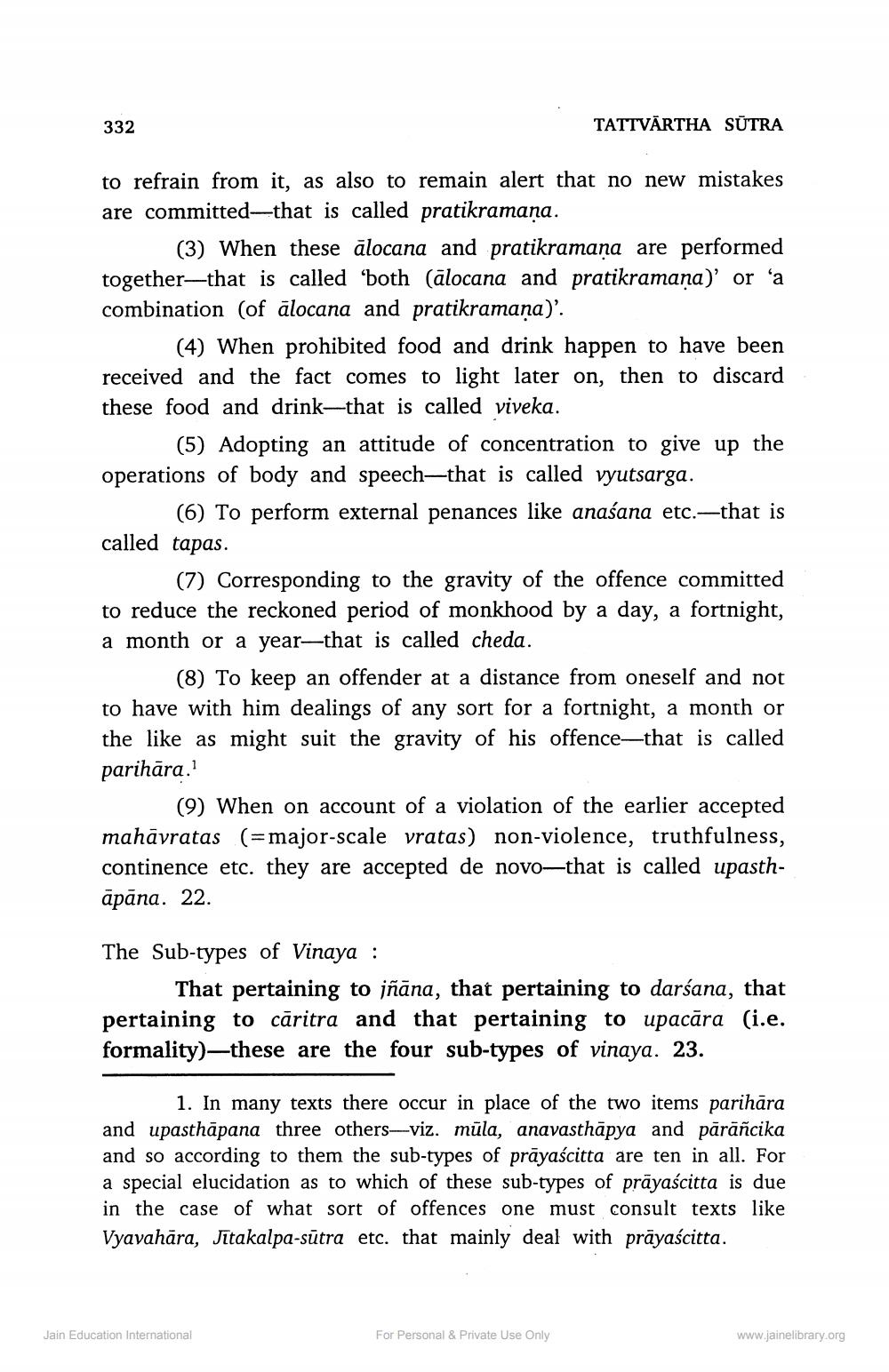________________
332
TATTVĀRTHA SŪTRA
to refrain from it, as also to remain alert that no new mistakes are committed—that is called pratikramaņa.
(3) When these ālocana and pratikramana are performed together—that is called 'both (alocana and pratikramana)' or 'a combination (of alocana and pratikramaņa)'.
(4) When prohibited food and drink happen to have been received and the fact comes to light later on, then to discard these food and drink-that is called viveka.
(5) Adopting an attitude of concentration to give up the operations of body and speech-that is called vyutsarga.
(6) To perform external penances like anaśana etc.—that is called tapas.
(7) Corresponding to the gravity of the offence committed to reduce the reckoned period of monkhood by a day, a fortnight, a month or a year—that is called cheda.
(8) To keep an offender at a distance from oneself and not to have with him dealings of any sort for a fortnight, a month or the like as might suit the gravity of his offence—that is called parihāra.
(9) When on account of a violation of the earlier accepted mahāvratas (=major-scale vratas) non-violence, truthfulness, continence etc. they are accepted de novo—that is called upasthāpāna. 22.
The Sub-types of Vinaya :
That pertaining to jñāna, that pertaining to darśana, that pertaining to cāritra and that pertaining to upacāra (i.e. formality)—these are the four sub-types of vinaya. 23.
1. In many texts there occur in place of the two items parihāra and upasthāpana three others—viz. müla, anavasthāpya and pārāñcika and so according to them the sub-types of prāyaścitta are ten in all. For a special elucidation as to which of these sub-types of prāyaścitta is due in the case of what sort of offences one must consult texts like Vyavahāra, Jītakalpa-sūtra etc. that mainly deal with prāyaścitta.
Jain Education International
For Personal & Private Use Only
www.jainelibrary.org




